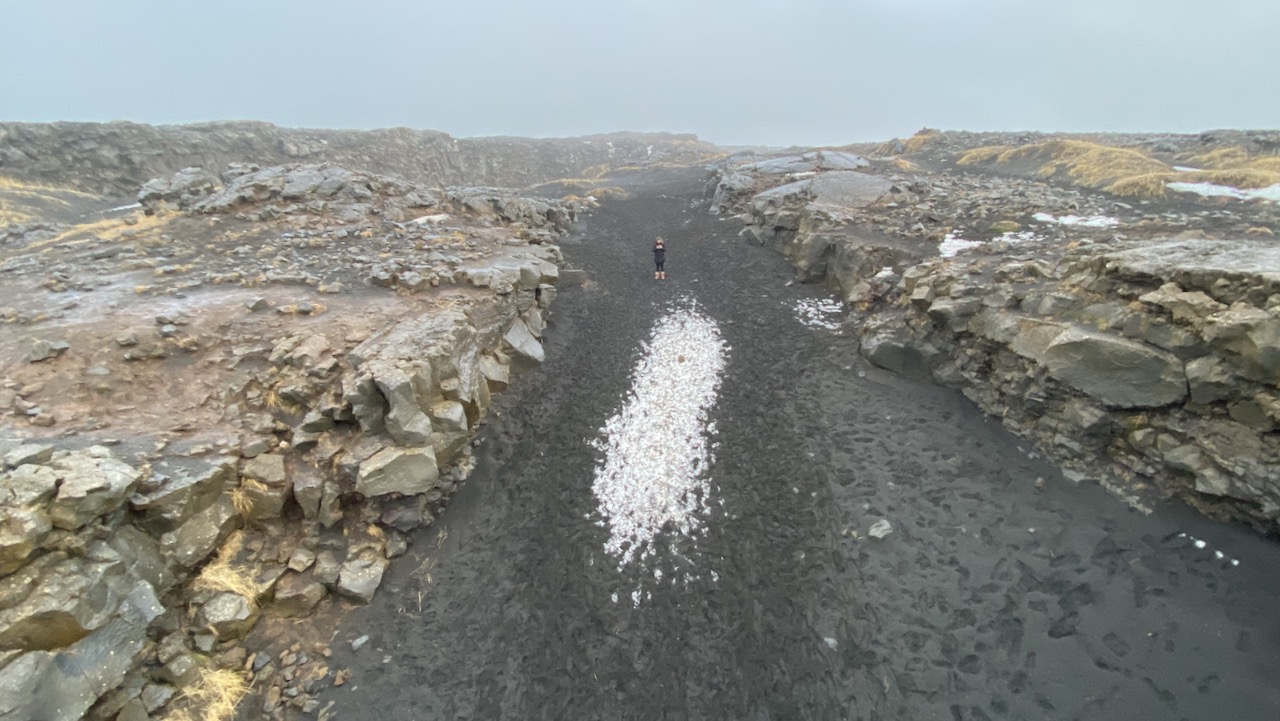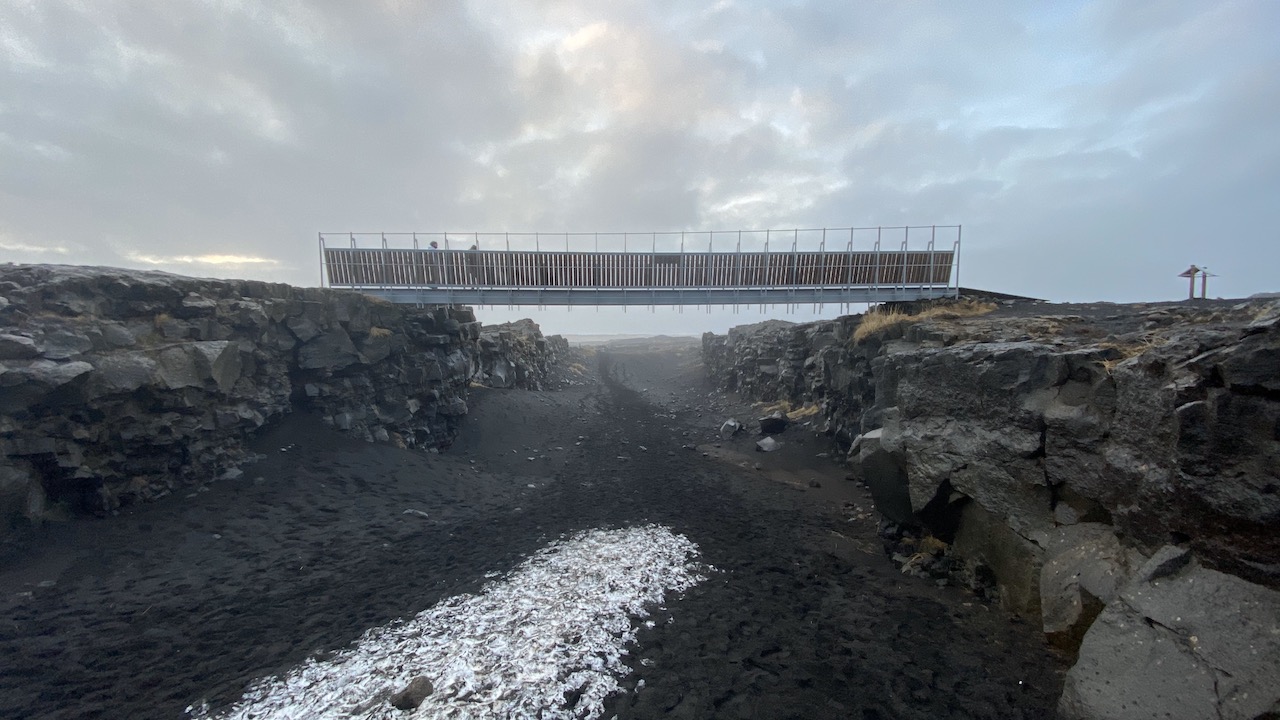I remember looking at a classroom map of Earth and thinking the continents seem like puzzle pieces, especially north and south America in the west and Europe and Africa in the east. I mentally fit them together. Later I learned about continental drift and plate tectonics, driven by gravity and mantle convection, with newborn crust at the Mid Atlantic Ridge recording reversals of Earth’s magnetic field in its cooling magma.
Last week I was in Iceland for the winter solstice in search of aurora. Came for astronomy; stayed for geology.
Iceland is a hot spot, probably the expression of an entrenched mantle plume, straddling the boundary between the North American and Eurasian tectonic plates. In southwest Iceland, on the lava-scarred Reykjanes peninsula, the Mid Atlantic Ridge is above ground. As the plates drift apart, several centimeters each year, a rift valley widens. Although the rift itself is several kilometers across, at Sandvik a small footbridge over a fissure in the rift symbolizes the connection between the continents.




